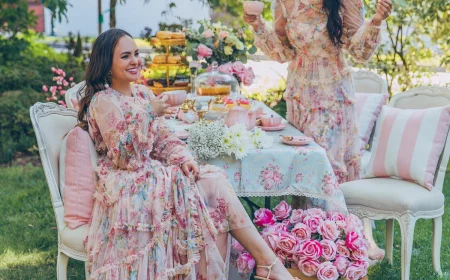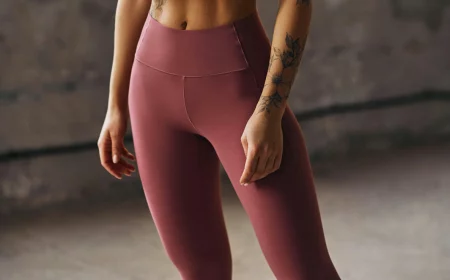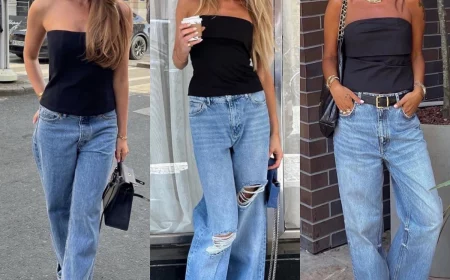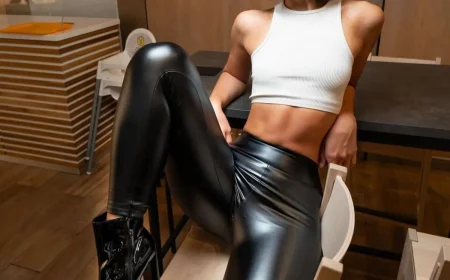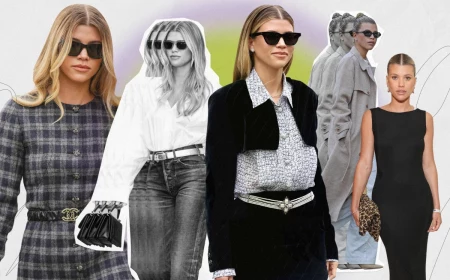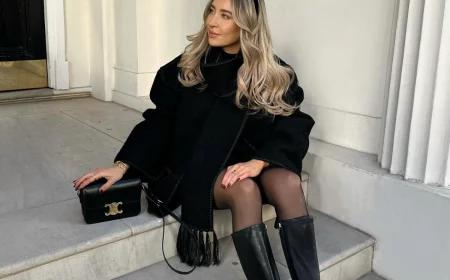Build a Wardrobe That Lasts: 7 Pieces Actually Worth Your Money
I’ve spent more years than I can count with a needle in my hand, surrounded by beautiful fabrics. As a wardrobe consultant and custom tailor, I’ve seen it all—the fleeting trends, the fads that vanish in a season, and the pieces that… well, the pieces that last.
In this article
- 1. The Trench Coat: Your Best Friend in Bad Weather
- 2. Denim Jeans: The Ultimate Wardrobe Workhorse
- 3. Quality Knitwear: More Than Just a Sweater
- 4. The Simple Black Dress: Your Personal Canvas
- 5. The Classic White Sneaker: Your Everyday Foundation
- 6. The Crisp White Shirt: The Ultimate Anchor Piece
- 7. The Versatile Scarf: Your Finishing Touch
- Bringing It All Together: Build, Don’t Just Buy
- Inspirational Gallery with Photos
It’s one thing to get a rush from a new purchase. But honestly, there’s a much deeper satisfaction in owning something for a decade. A coat that has molded to your shoulders, or a pair of jeans that tells a story. This is about moving away from throwaway fashion and towards buying less, but buying smarter. It’s about understanding why a garment is great, not just that it’s popular right now.
So, this isn’t another list of trendy “must-haves.” Think of this as a guide to the seven core items I’ve seen prove their worth time and time again, for both my clients and myself. We’re going to look at them from a craftsperson’s point of view: the materials, the build quality, and how to take care of them so they take care of you. Let’s get into it.
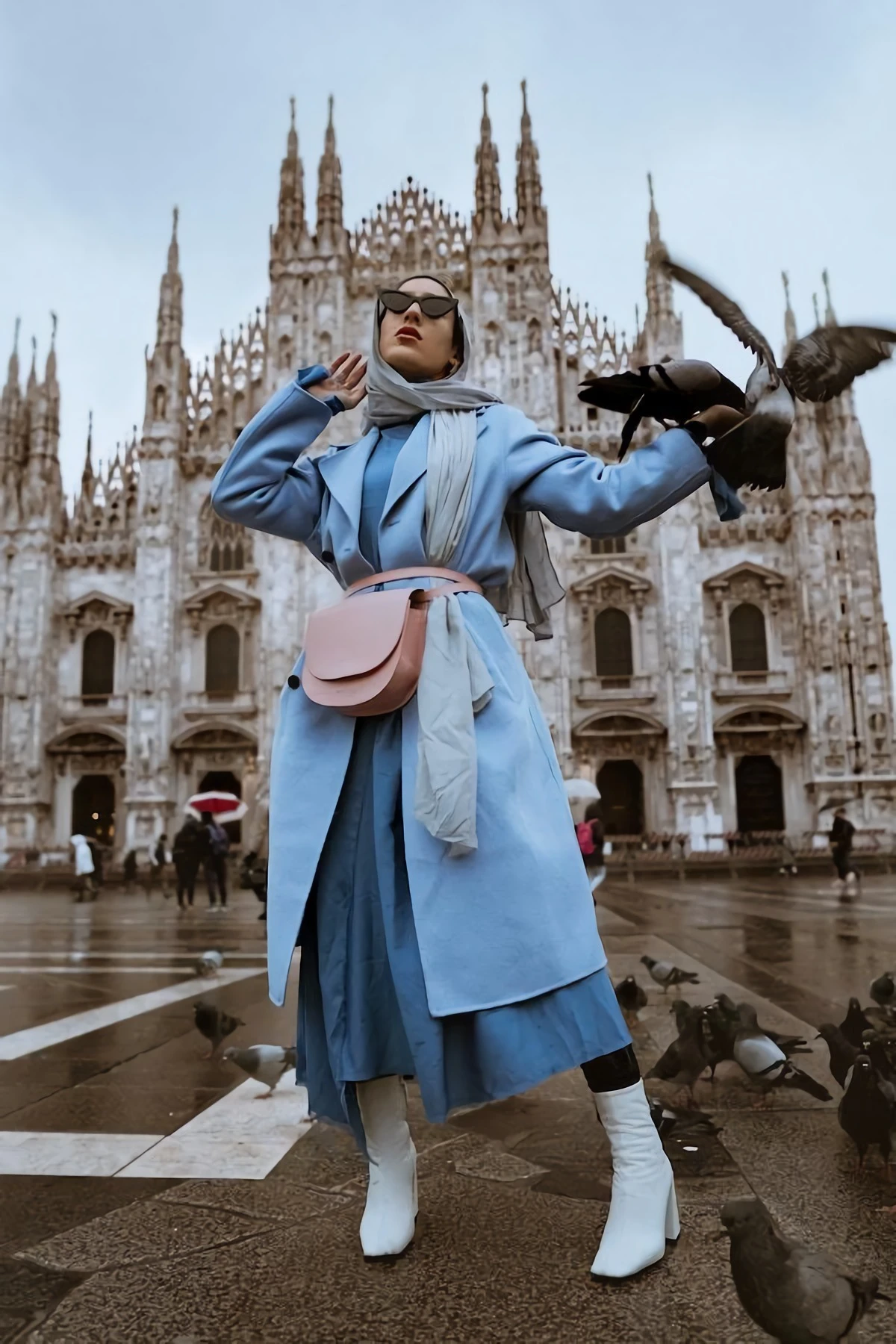
1. The Trench Coat: Your Best Friend in Bad Weather
The trench coat is so much more than a fashion statement; it’s a brilliant piece of functional design. It was originally engineered to protect people from the elements without being bulky or restrictive, and that purpose is still baked right into its DNA.
What Makes a Great Trench Coat?
The gold standard material here is cotton gabardine. It’s a twill fabric woven so tightly that it naturally sheds water. The diagonal weave helps rain run right off instead of soaking in. Plus, it’s breathable, so you don’t get that clammy, sticky feeling you get from a lot of synthetic raincoats. Cheaper versions often use a simple cotton with a chemical coating, but a heads-up: that coating wears off, and you’re left with a coat that just gets soggy.
By the way, all those classic details have a purpose. The flap on the shoulder? An extra layer of rain protection. The shield on the back? It helps water run off cleanly. Even the D-rings on the belt, which originally held gear, speak to the coat’s practical heritage.
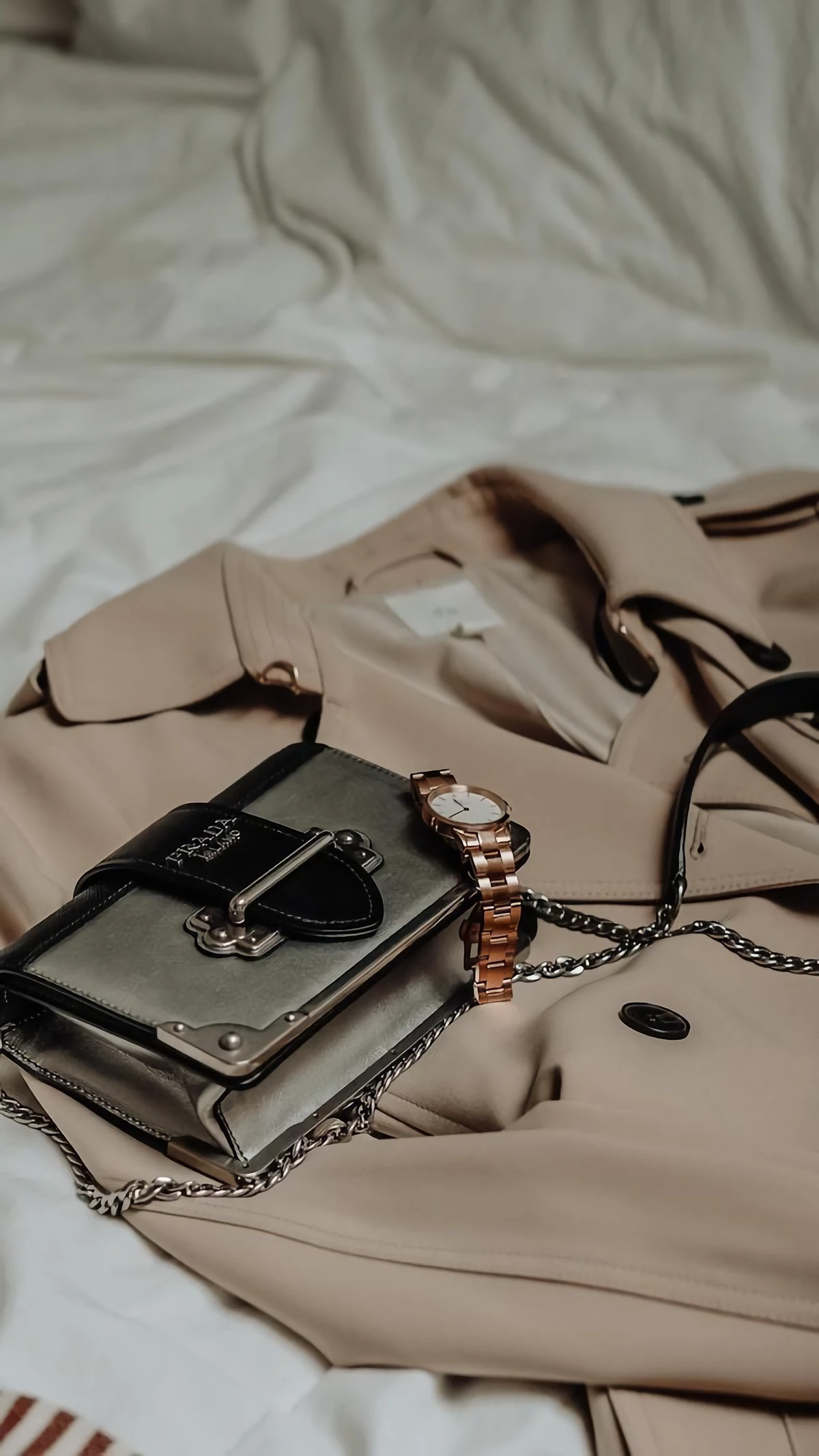
How to Pick a Winner (and What to Pay)
When you’re shopping, ignore the brand name for a second and look at the build. Check the seams—you want a high number of stitches per inch for strength. Is it fully lined? A good lining (usually cotton or viscose) helps it hang right and slide on easily. And feel the buttons. Plastic ones feel cheap and can crack, while real horn buttons have a satisfying weight that just screams quality.
Fit is everything. The shoulder seam should sit right on the edge of your shoulder bone. For length, a coat that ends just above the knee is the most versatile. But what about the cost? Let’s be real.
- Budget-Friendly Quality: For a well-made coat, maybe in a sturdy cotton blend, expect to spend between $200 and $400. You can find solid options here that will last for years.
- Heritage Quality: For true cotton gabardine and top-tier construction, you’re looking at $800 or more. This is a serious investment piece.
- The Smart Buy: A vintage find! You can often score an amazing, high-quality trench for $75 to $150 in a thrift or consignment shop.
A common mistake is tossing these in the wash. Don’t do it! You’ll wreck the structure. Spot clean with a damp cloth, and for a deep clean, find a trusted dry cleaner. It’s an investment worth protecting.
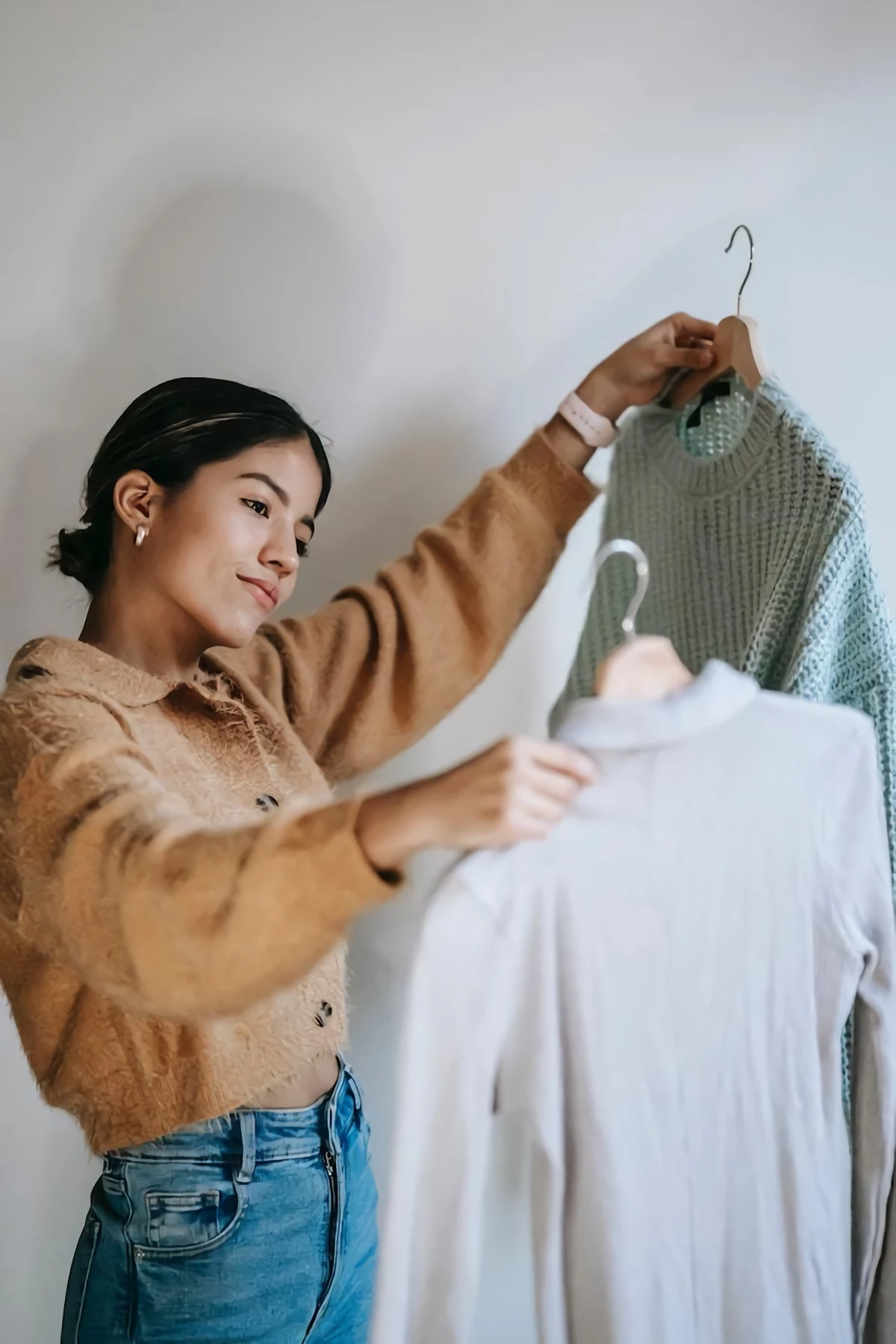
2. Denim Jeans: The Ultimate Wardrobe Workhorse
Is there any piece of clothing more personal than a pair of jeans? They start as simple workwear and transform into a second skin. The magic of good denim is how it becomes uniquely yours over time.
The Deal with Denim Fabric
Denim is a tough cotton twill where the lengthwise threads are dyed indigo and the crosswise threads are left white—that’s why the inside is lighter. Denim weight is measured in ounces. Lighter denim (under 12 oz) is softer, while heavier denim (14 oz and up) is more rigid and durable. This is the stuff you find in “raw” denim.
Raw denim is basically untreated, stiff fabric that you break in yourself. It fades and creases based on how you move, creating a totally personalized look. Most jeans you buy, though, are “sanforized,” meaning they’ve been pre-shrunk and feel comfortable from day one.
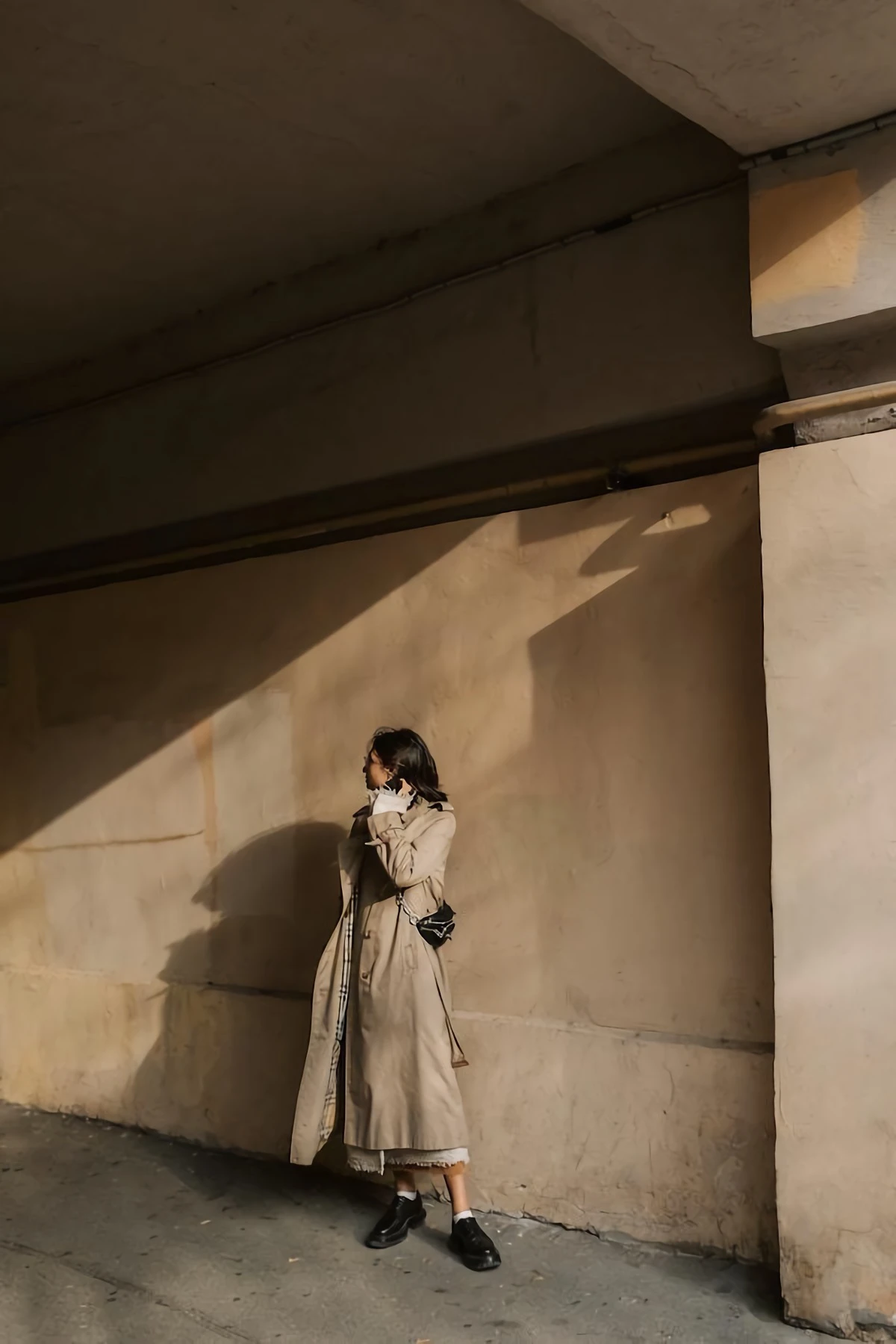
A Tailor’s Secret to the Perfect Fit
I’ve altered hundreds of pairs of jeans, and here’s the most common mistake I see: people buy jeans that fit their waist but are too tight on their hips and thighs. Quick Tip: Always fit the widest part of your lower body first. A tailor can easily take in the waist; it’s a simple and relatively cheap alteration (usually $20-$40). Reshaping the entire leg is a much bigger, more expensive job.
For a starting point, classic brands like Levi’s or Madewell offer reliable fits for many body types. If you’re curious about breaking in raw denim, brands like A.P.C. or Nudie Jeans are famous for it. Expect to pay anywhere from $60 for a great sale find to $150-$250 for premium or raw denim.
Heads up on new, dark jeans: the indigo dye can bleed! I’ve seen it stain white sneakers, light-colored couches, you name it. Be careful the first few times you wear them. Soaking them in cold water with a cup of white vinegar before the first wash can help set the dye.
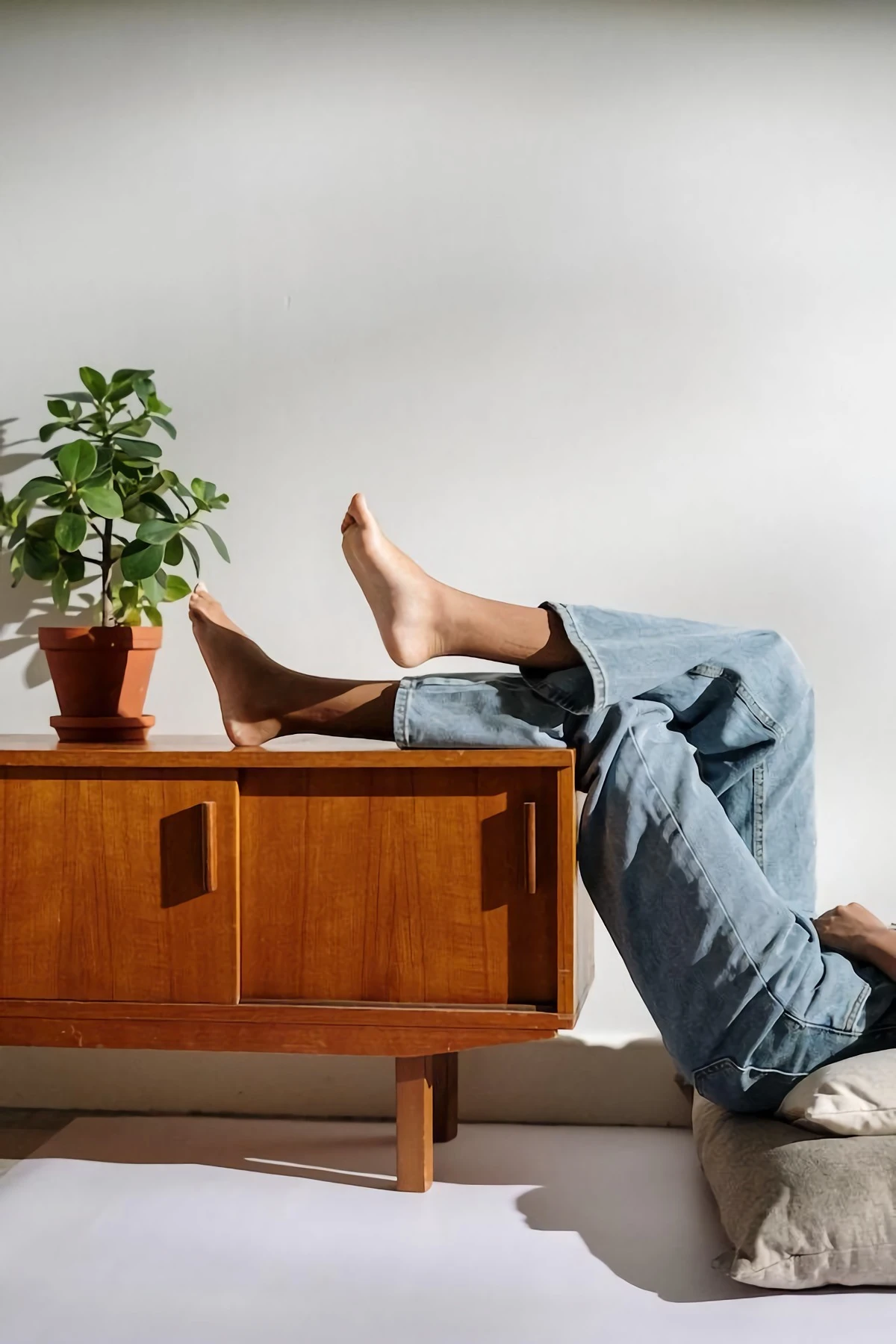
3. Quality Knitwear: More Than Just a Sweater
There’s a world of difference between a cheap, pilling acrylic sweater and a well-made piece of knitwear. A good sweater is an investment in pure comfort, and it all comes down to the fiber.
Choosing Your Fiber
Natural fibers are where it’s at. They breathe, they insulate, and they feel amazing. Here’s a quick rundown:
- Merino Wool: This is your all-star player. It comes from Merino sheep and has super fine, soft fibers, so it isn’t itchy like some other wools. It’s perfect for pieces you wear right against your skin. A great merino sweater will likely run you $80-$200.
- Cashmere: This is the definition of luxury. It’s actually hair from the undercoat of cashmere goats, and the fibers are incredibly fine and hollow, making it light but unbelievably warm. Good, long-fiber cashmere is less likely to pill. Expect to pay $150 and up, which is why finding one second-hand is such a victory.
- Shetland Wool: This is a more rugged, fuzzy, and textured wool. It’s fantastic for a durable, classic crewneck sweater that has that timeless, scholarly vibe. It’s also a bit more budget-friendly, often in the $70-$150 range.
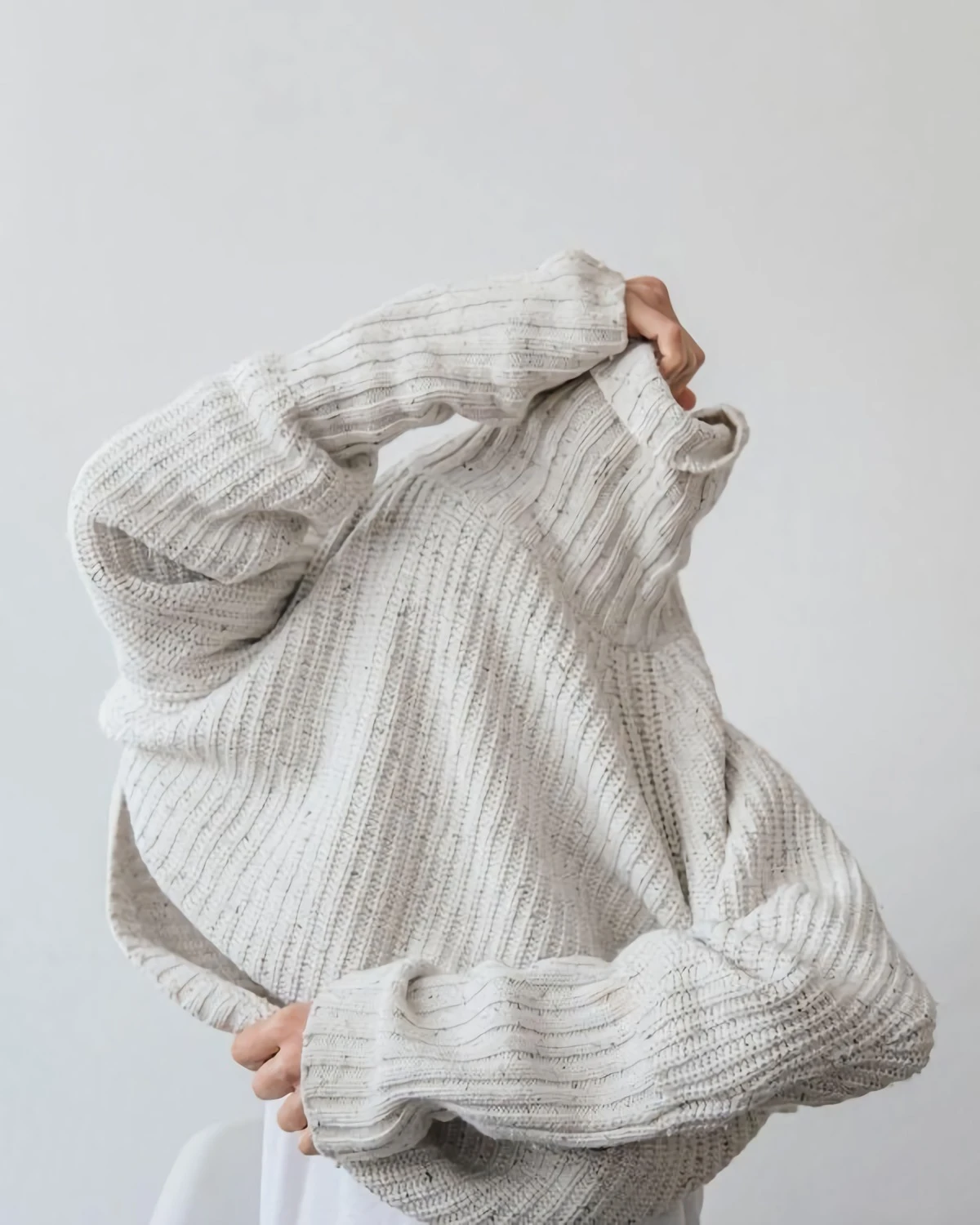
How to Spot Quality
A lesser-known trick: Look for sweaters that are “fully fashioned.” This means each piece was knitted to shape, not just cut out of a big sheet of fabric and sewn together. The seams will be cleaner and more durable. Also, gently stretch a bit of the fabric. If it doesn’t snap back into shape, the yarn is poor quality.
Pitfall to avoid: Excessive pilling. While all-natural fibers pill a little, a sweater that’s covered in fuzz balls after two wears was likely made with cheap, short fibers. And please, please, please… hand wash your good sweaters in lukewarm water and lay them flat to dry. A washing machine will turn your beloved wool into a shrunken, felted mess. I’m serious!
Oh, and one more thing: moths. They LOVE natural fibers. Always clean your knits before storing them for the summer. Cedar blocks or lavender sachets are your friends.

4. The Simple Black Dress: Your Personal Canvas
Forget the “little black dress” for a second and think of it as the “simple black dress.” Its real power is in its simplicity. It’s a backdrop that lets you and your personal style shine.
Fabric is Everything
The material completely dictates how the dress will look and feel. A wool or synthetic crepe has a beautiful drape and resists wrinkles, making it perfect for work or travel. A ponte knit is a modern hero—it’s a thick double-knit that’s stretchy and comfy but still looks super polished. For something more formal, you can’t beat the subtle shine of silk or a silk blend.
Finding Your Shape
The perfect silhouette is the one that makes you feel amazing. A sheath is fitted and powerful, an A-line is classic and forgiving, and a _wrap dress_ is famously flattering on almost everyone. A well-chosen dress in a dark, neutral color (it doesn’t have to be black—charcoal, navy, or chocolate brown can be just as versatile and sometimes more flattering) is a true wardrobe chameleon.
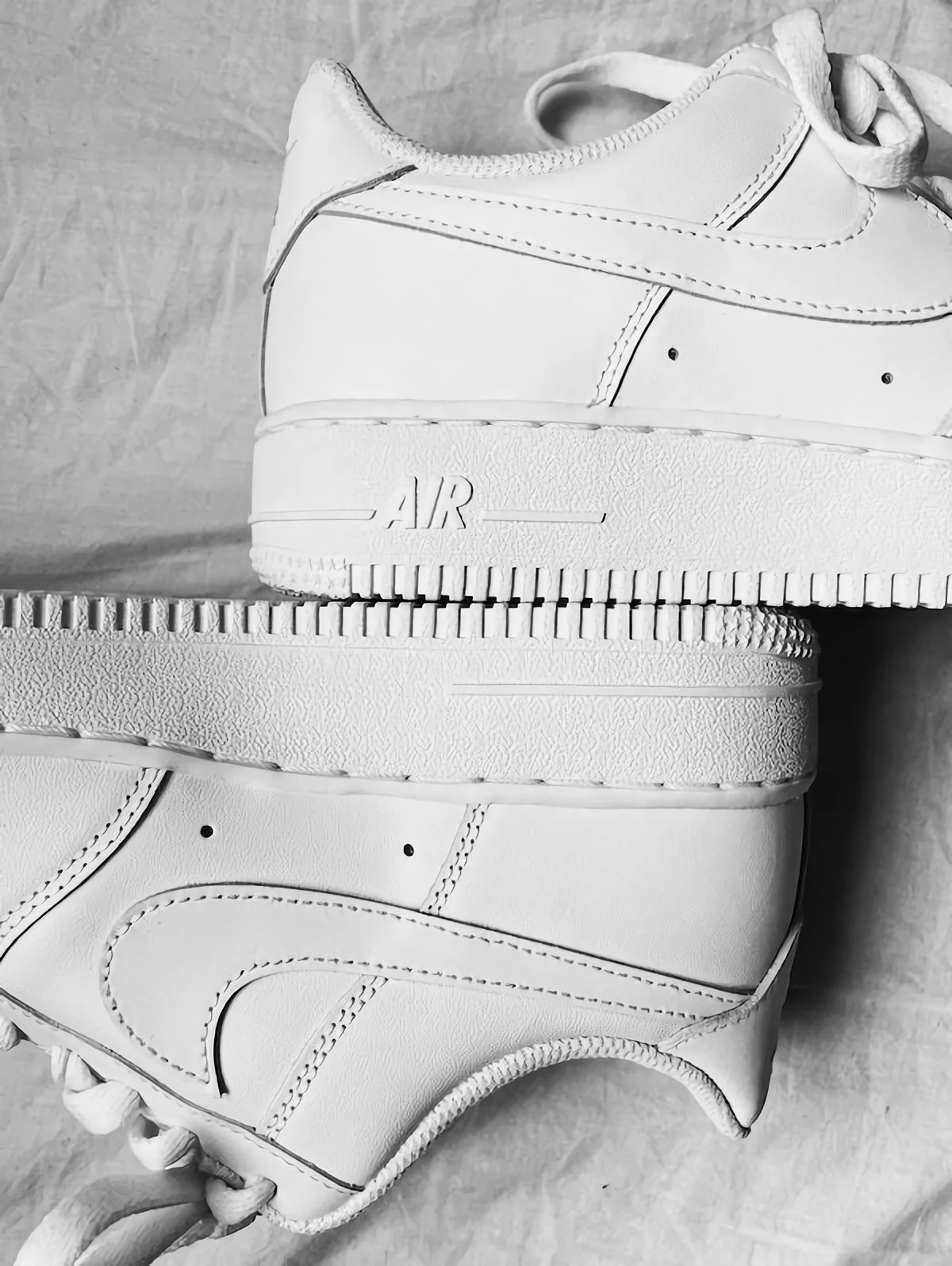
Try This Now: Pull your favorite simple dress out of the closet. Now, style it for a casual weekend (with sneakers and a denim jacket?), for a work meeting (with a blazer and boots?), and for a nice dinner out (with heels and some great jewelry?). See? One dress, three completely different lives. That’s the goal!
Budget-wise, you can find a fantastic ponte dress for $100-$250. A higher-end wool crepe or silk version might be $300+, but consignment stores are an absolute goldmine for this item.
5. The Classic White Sneaker: Your Everyday Foundation
It’s amazing how the humble white sneaker went from the gym to, well, everywhere else. A clean, minimal pair can ground almost any outfit while keeping you comfortable all day long.
Anatomy of a Great Sneaker
Pitfall to avoid: Steer clear of “corrected grain” or “bonded” leather. It’s basically leather dust mixed with plastic. It has a uniform, plasticky shine, and it will crack and peel over time. What you want is full-grain leather. It’s a natural material that breathes, lasts, and develops a beautiful, subtle patina as you wear it.

A stitched sole is a sign of superior craftsmanship, but a well-cemented (glued) sole is perfectly fine for most quality sneakers. You don’t need to spend a fortune here. A great pair of classic leather sneakers will set you back about $80-$150. Designer versions can cost a lot more, but you’re not necessarily getting more quality for the price.
Keeping Them White (The Realistic Way)
The secret is regular, gentle maintenance. Remove the laces and wash them separately. Use a soft brush to get rid of loose dirt. Then, use a gentle cleaner—a simple paste of baking soda and water works great, or saddle soap for leather. Work in small circles, wipe clean with a damp cloth, and let them air dry away from direct heat. It’s a 10-minute job that makes all the difference.
6. The Crisp White Shirt: The Ultimate Anchor Piece
A well-made white shirt can be formal, relaxed, and everything in between. The secret to its versatility is in the cotton weave.
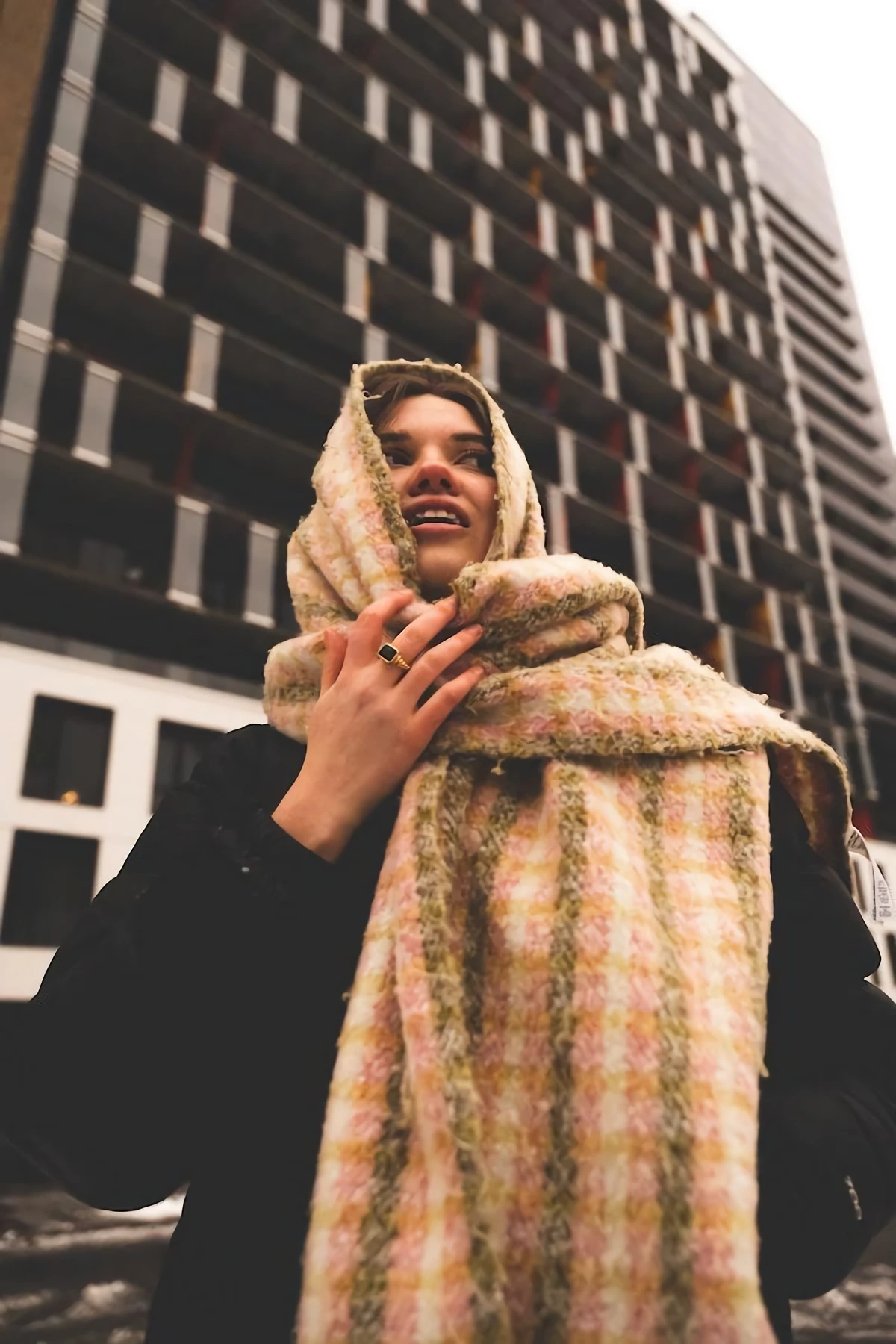
Choosing Your Cloth
It’s good to know the basics. Poplin is smooth, crisp, and classic for dress shirts. Oxford cloth has more of a basket-weave texture, making it more durable and casual—it’s the quintessential button-down fabric. Twill has a subtle diagonal pattern, is super soft, and resists wrinkles better than the others.
Quick Win: Go grab the best shirt you own. Are the buttons thin plastic, or are they thick mother-of-pearl with a nice shimmer? Can you find the little plastic or metal tabs (collar stays) that keep the collar sharp? Just learning to spot these details makes you a smarter shopper instantly.
A good Oxford shirt might cost between $60 and $120. A premium dress shirt with all the trimmings could be $150 or more. Pro tip: The best way to keep a white shirt from yellowing is to avoid chlorine bleach and use an oxygen-based brightener instead. And always iron it while it’s still a tiny bit damp—it’s a game-changer.
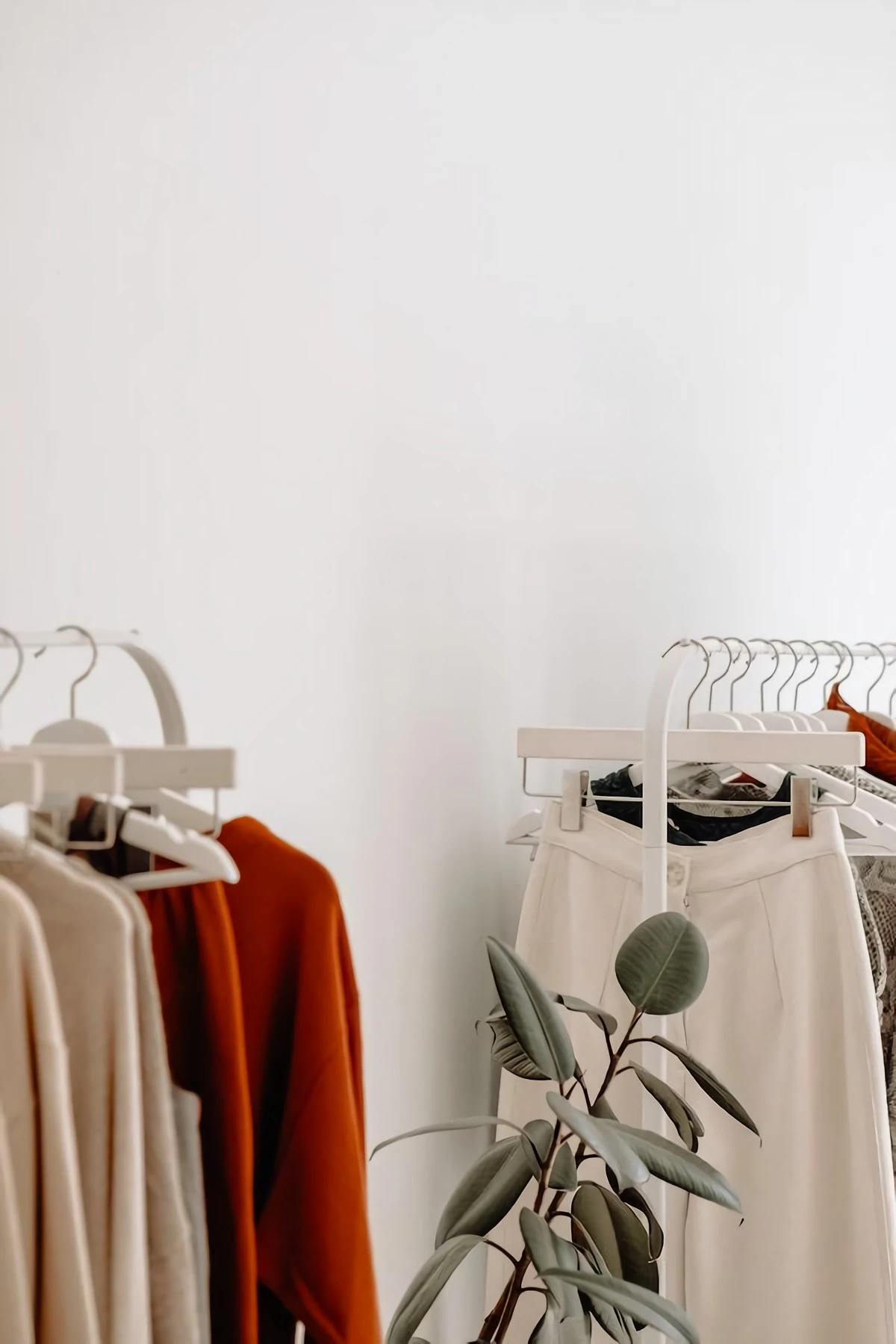
7. The Versatile Scarf: Your Finishing Touch
I don’t see a scarf as just an accessory; it’s a core wardrobe piece. It’s the fastest, easiest way to inject color, pattern, and personality into an otherwise simple outfit.
A lightweight silk square adds instant elegance. A large wool or cashmere scarf provides luxurious warmth and can double as a wrap for travel. A breathable linen or cotton scarf is perfect for adding a relaxed touch in warmer weather. And don’t overlook modal blends—they are incredibly soft, drape beautifully, and are often more affordable.
This is an area where you can play with budget. A beautiful cotton or modal scarf can be found for $20-$50. A fine wool scarf might be $75-$150, and a real silk one can be a splurge. But once again, vintage and consignment shops are your best friends for finding unique, high-quality silk scarves for a song.
Bringing It All Together: Build, Don’t Just Buy
These seven pieces aren’t a uniform; they’re the core ingredients. They’re the reliable, high-quality starting points you can use to create endless outfits that feel like you. When you start focusing on material, construction, and function, you stop being just a consumer and become a curator of your own style.
And probably the most important piece of advice? Find a good local tailor. But how do you do that?
Start by asking stylish friends for recommendations, or check local online reviews. Look for a dedicated tailor shop, not just a sewing machine in the back of a dry cleaner. For your first visit, bring them something simple, like a pair of trousers that need hemming. It’s a low-risk way to test their skills. A great tailor is the true secret to making good clothes look incredible.
So, which of these seven pieces is missing from your wardrobe? And which one are you going to start hunting for first? Let me know in the comments below!
Inspirational Gallery with Photos
- Never hang heavy knitwear; it will stretch under its own weight. Fold it carefully instead.
- Using high heat in the wash or dryer is the fastest way to shrink and damage wool fibers.
- Avoid harsh detergents. Opt for a pH-neutral wool wash like The Laundress Wool & Cashmere Shampoo to preserve natural lanolin.
Is more expensive cashmere always better?
Not necessarily. The key is the length and fineness of the fibers. A sweater made from long, fine fibers will pill less and last longer than a pricey one made from short, coarse fibers. When shopping, gently rub the surface. If it starts to fluff up or shed immediately, it’s likely made with shorter fibers. Brands like Johnstons of Elgin or Naadam are known for sourcing high-quality, long-staple cashmere.
The fashion industry is responsible for up to 10% of global carbon emissions – more than all international flights and maritime shipping combined.
Choosing a garment built to last isn’t just a style choice; it’s an environmental one. Every extra year you keep a piece like a well-made coat or a pair of leather boots reduces its carbon, water, and waste footprint. Your wardrobe can be a powerful statement of sustainability.
Full-Grain Leather: This is the highest quality leather. It uses the entire grain of the hide, including the natural surface imperfections. It’s incredibly durable and develops a beautiful, rich patina over time.
Top-Grain Leather: The second-highest quality. The surface is sanded and refinished to remove blemishes. It’s more pliable and stain-resistant than full-grain but less durable in the long run.
For a piece that tells a story, like a classic biker jacket, full-grain is the ultimate investment.
There’s a quiet confidence that comes from wearing something truly well-made. It’s in the substantial drape of a heavy wool coat, the smooth glide of a quality zipper, and the way a linen shirt softens with every wash. These are sensory details that cheap imitations can never replicate.
The Thrifting Pro-Tip: Don’t just look at the clothing section corresponding to your gender. Some of the best-quality cashmere and merino wool can be found in the men’s sweater department. Often less worn and made with more generous cuts and fabric, a men’s sweater can become your perfect oversized, cozy staple.
Buy less, choose well, make it last.
Beyond the fabric type, the small details betray a garment’s true quality. Before you buy, become a detective and check these key areas:
- Lining: Is the garment fully lined? A quality lining (often in silk, cupro, or viscose) helps a piece hang properly and makes it easier to put on. It’s a sign the maker didn’t cut corners.
- Buttons and Buttonholes: Are the buttons made of a substantial material like horn or mother-of-pearl, or are they flimsy plastic? Check that the buttonholes are densely stitched and clean-cut, not fraying.
- Pattern Matching: On a striped or plaid fabric, do the patterns line up at the seams, especially at the shoulders and side seams? This takes more fabric and skill, and is a hallmark of high-quality construction.
- Your clothes will look fresher, with more vibrant colors.
- You’ll drastically reduce wrinkles without the harsh pressure of an iron.
- It eliminates odors, meaning you can wash delicate items less often.
The secret? Investing in a quality garment steamer. A handheld steamer from a brand like Steamery is a game-changer for extending the life of your most-loved pieces, from silk blouses to wool blazers.
How to deal with wear and tear on your favorite denim?
Instead of seeing a hole as a flaw, consider embracing the Japanese art of *Sashiko*. This traditional form of decorative reinforcement stitching uses simple running stitches to mend worn areas, creating beautiful, unique patterns. It doesn’t just fix your jeans; it adds character and a personal story. A simple Sashiko kit with thread and needles is all you need to turn a repair into a design feature.

